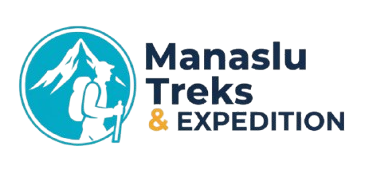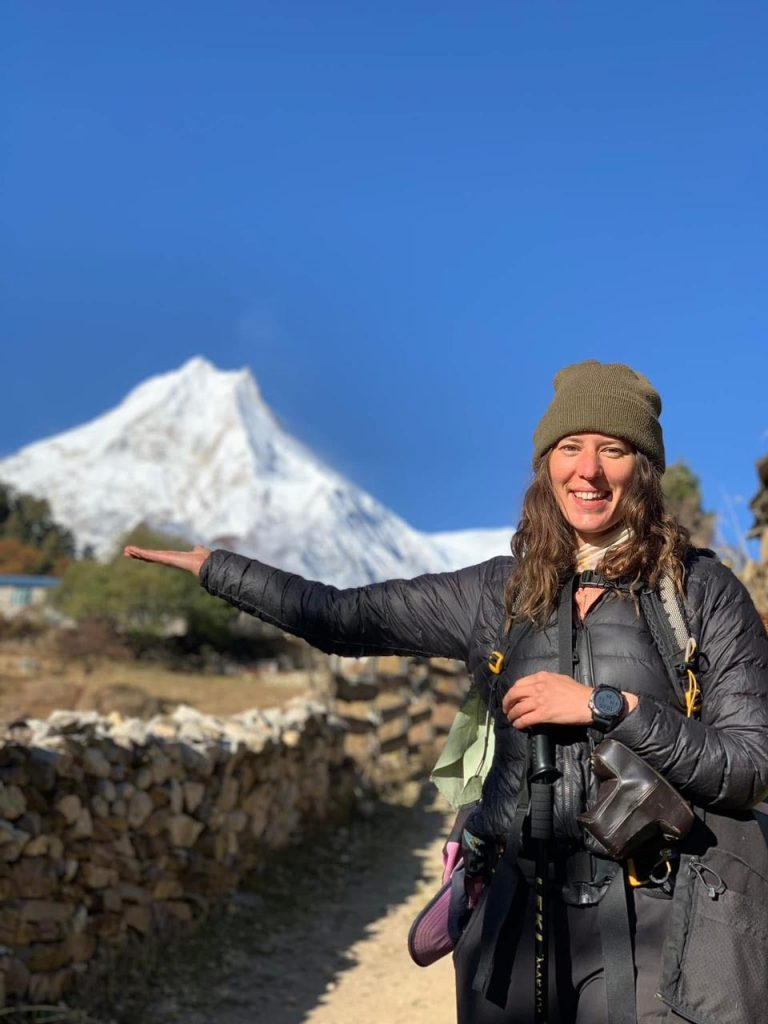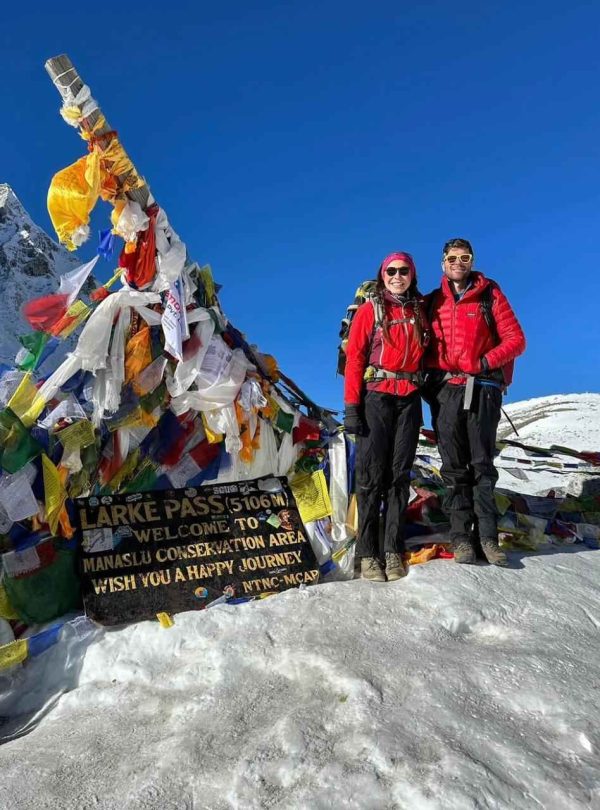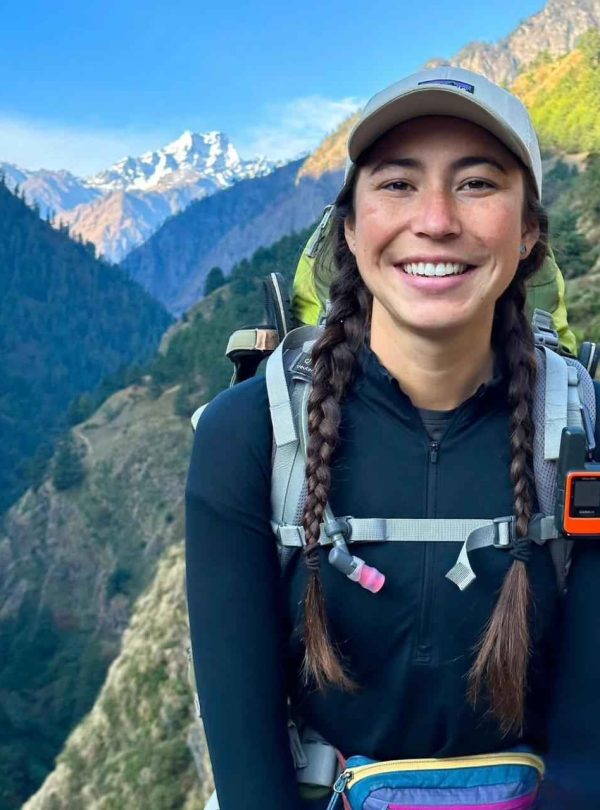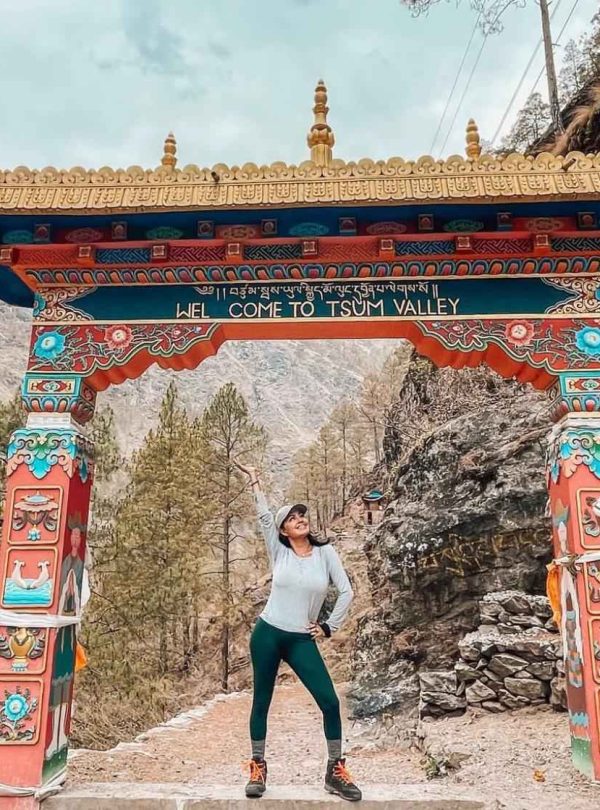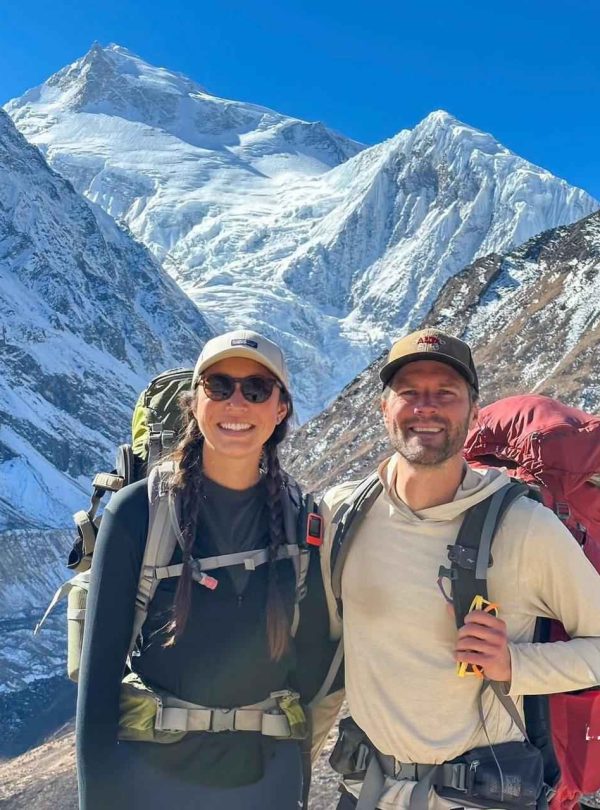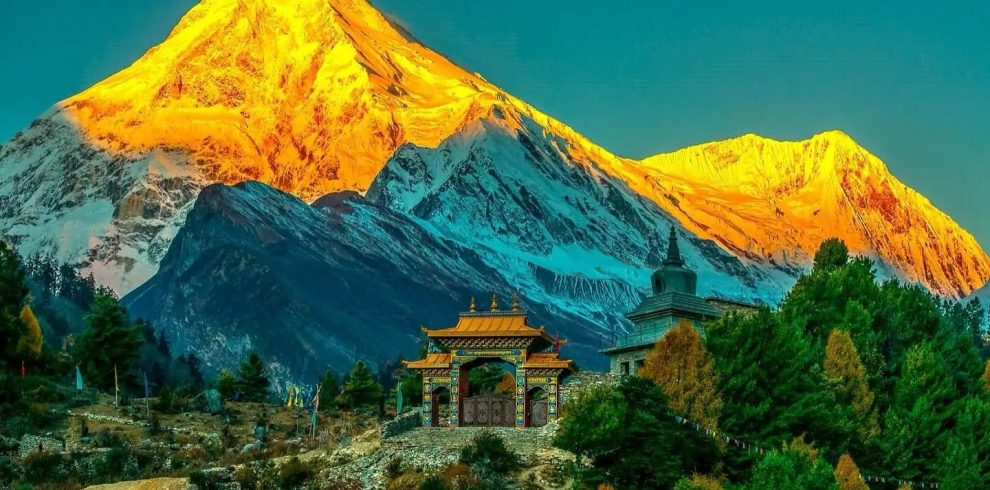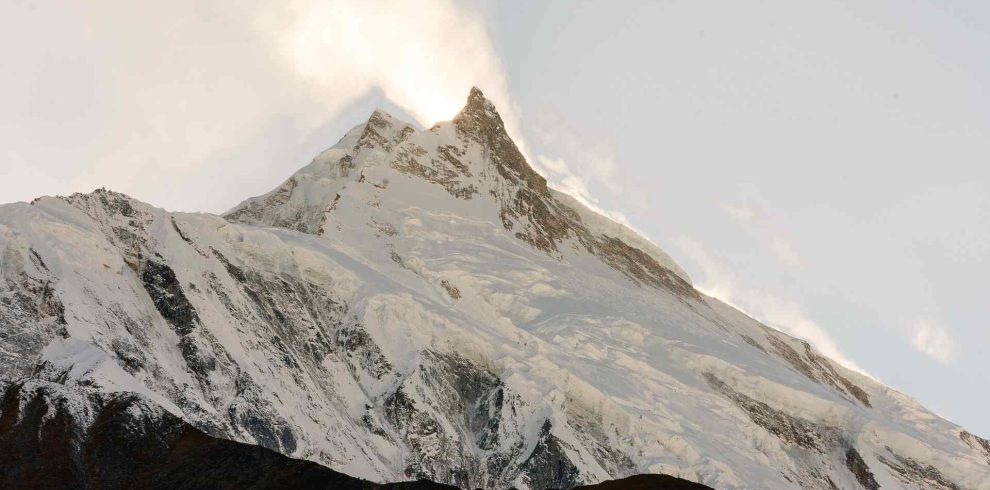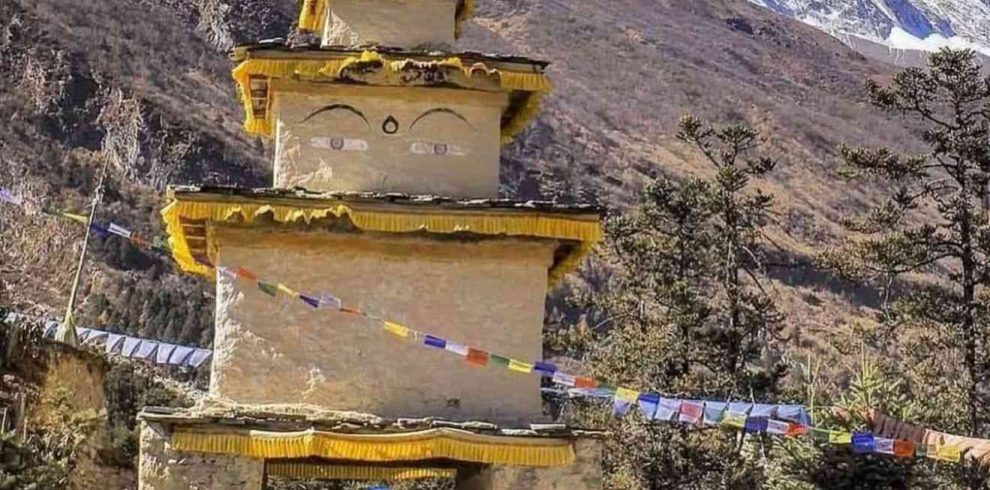The Manaslu Circuit and Tsum Valley Trek is a 19-day journey through remote valleys, ancient monasteries, and the high Larkya La Pass. Book hassle-free with no advance payment and experience the Himalayas with local experts.
Manaslu Circuit and Tsum Valley Trek Overview
The Manaslu Circuit and Tsum Valley Trek is a remarkable 19 day journey that takes you deep into the wild heart of Nepal. This trek combines the classic Manaslu Circuit with the hidden Tsum Valley, offering both breathtaking mountain scenery and a rare cultural experience. Far less crowded than the Everest or Annapurna routes, this trail gives you the feeling of true exploration.
Rising above everything is Mount Manaslu at 8,163 meters, the eighth highest mountain in the world. Along the way you pass through quiet forests, cross suspension bridges over roaring rivers, and walk into villages where life has changed very little for centuries. In the Tsum Valley you will meet communities whose traditions are deeply connected with Tibetan Buddhism. Ancient monasteries, prayer walls and the famous Milarepa’s Cave make this part of the trek especially spiritual.
The highlight of the Manaslu section is crossing Larkya La Pass at 5,160 meters. It is one of the longest and most beautiful passes in Nepal. Standing at the top, you are surrounded by stunning views of Manaslu, Ganesh Himal, Himlung Himal, Cheo Himal and even Annapurna II in the distance.
This trek is challenging and you should be prepared for full days of walking, often six to seven hours, through high altitude landscapes. But the rewards are more than worth it. You will experience both the natural beauty of the Himalayas and the warm hospitality of Gurung, Sherpa and Tsumbas people who welcome you into their villages.
For adventurous travelers who want something more unique than the popular trails, the Manaslu Circuit with Tsum Valley is a perfect choice. It is a journey of mountains, culture and unforgettable experiences.
Why Book the Best Manaslu Circuit Trek plaus Tsum Valley Trek with Us?
- We offer a 100 percent hassle-free trekking experience with all permits, transport, meals, and accommodation arranged for you
- No advance booking fee is required; you can pay after arriving in Nepal by international card, bank transfer, or cash
- Our itinerary is crafted by experienced local Manaslu trekking guides who know every detail of the trail
- We provide 24/7 customer support before and during your trip via WhatsApp, email, or phone
- Our guides and porters are friendly, professional, and trained in emergency rescue, altitude sickness response, and first aid
- You can trek at your own pace with no pressure; if you need extra time or rest days, we’re always flexible
- We book the best available tea houses along the route for cleaner rooms, better food, and a more comfortable stay
- We focus on your safety, comfort, and satisfaction from the moment you contact us until the end of your trek
Manaslu Circuit Tsum Valley Trek Highlights
- Authentic Tsum culture with Tibetan Buddhist traditions and lifestyle
- Sacred monasteries including Mu Gompa, Rachen Gompa, and ancient chortens
- Cross the high Larkya La Pass at 5,160 meters with dramatic Himalayan views
- Stunning panoramas of Mount Manaslu, Ganesh Himal, Himalchuli, and Shringi Himal
- Diverse landscapes from terraced fields and subtropical forests to alpine meadows and glaciers
- Rare wildlife such as snow leopards, blue sheep, and the Himalayan monal
- Off the beaten path adventure with magical sunrise views, yak and chauri products, and warm village hospitality
Manaslu Circuit and Tsum Valley Trek Itinerary
A representative from Manaslu Treks and Expedition greets you at Tribhuvan International Airport and escorts you to your hotel in Thamel. After a welcome tea, your guide checks gear, permits, and insurance details and helps you rent or buy anything missing. If time allows, stroll to Ason and Indra Chowk to feel old Kathmandu, try a plate of momos, or step inside a small courtyard shrine that hums with evening butter lamps. At the briefing, your guide explains the Manaslu and Tsum Valley permit rules, trail etiquette near monasteries, and the pacing plan for safe acclimatisation.
Leave the city after breakfast and follow the Prithvi Highway beside the Trishuli River. The road is smooth at first, then turns rural beyond Dhading Besi. Terraces step up the hillsides, schoolchildren wave from the roadside, and women thresh millet in courtyards. After Arughat the track narrows and grows rough as it climbs above the Budhi Gandaki. Expect dust and bumps, but also wide views into the gorge and the promise of wilder country ahead. You reach Maccha Khola by late afternoon. Tea houses sit close to the river, the air is warm and there is the steady sound of water. Your guide gives a short walk to stretch legs and shows you where to refill water and how to use your purification system for the days ahead.
The Manaslu Circuit begins beside the Budhi Gandaki with a steady pattern of short climbs, balcony paths, and bridges. You pass Khorla Besi, then reach Tatopani, a natural hot spring where locals soak tired muscles. The trail narrows through rock walls and opens again to small fields of maize and millet. Black faced langurs often move in the trees here, and you may hear the soft click of prayer beads as elders walk past. After Doban and Yaru Phat, a long suspension bridge sways above the Yaru Khola. The final hour climbs to Jagat, a stone paved village with carved lintels, neat alleys, and a square where children play. This is the check post for the Manaslu restricted area. Your guide handles permits while you sip a ginger lemon tea on a sun warmed step.
Leave with the first light and follow a gentle path to Sirdibas where white washed houses wear bright prayer flags. A short ascent reaches Salleri with wide views of Sringi Himal. The track contours to Philim, a larger village with a school and tidy fields. It is a good place for a relaxed lunch and to chat with shopkeepers about seasonal crops and recent pass conditions. Beyond Philim the forest grows thick and the crowds fall away. You cross elegant bridges, hear the river far below, and meet the quiet gate that marks the turn into the Tsum Valley. The final approach rises through bamboo and pine to Lokpa, a small settlement set on a shelf above the gorge. Evenings are still and the sky is full of stars.
The path dips and climbs through mixed forest scented with pine and damp earth. In places the trail is narrow with steep drops, in others it opens to grassy spurs where you stop to drink and watch the light move on the cliffs. Across the valley the first shoulders of Ganesh Himal appear. A long suspension bridge leads to Chumling, your first true Tsum village, with stone houses, small mani walls, and tidy kitchen gardens. Visit the local monastery in the late afternoon when the wind quiets and the prayer flags hang almost still. Dinner might be dhindo with nettle soup, a hearty local meal shared with your hosts.
The trail from Chumling climbs gradually through fields of maize and barley, then winds into forests alive with bird calls. You pass small villages like Ripchet where stone houses are clustered together, giving a glimpse of daily life in the Tsum Valley. Mani walls guide your way, and long wooden bridges carry you over rushing rivers. The higher you climb, the clearer the snowy summits of Ganesh Himal and Himalchuli become.
After about six hours you reach Chekampar, also known as Chokhangparo. This twin village, formed by Chokhang and Paro, is one of the largest settlements in Tsum. The wide open fields here support yak grazing, and monasteries sit on ridges overlooking the valley. As the sun sets, the air grows cold and prayer flags shimmer in the golden light. Stay in a local tea house and enjoy a warm dinner with yak butter tea if you’d like to try something traditional.
Start the morning with clear mountain views before following the trail past mani walls and chortens. You pass through Phurbe and Pangdun, quiet villages with stone courtyards where yaks and dzopkyos rest. The walk is gentle but steady, always climbing a little higher.
On the way you may stop at Rachen Gompa, a nunnery with bright murals and a strong spiritual presence. From here the trail narrows, following the Shiar Khola upstream until the valley opens again. By late afternoon you arrive in Nile, the last major village before the Tibetan border. With its slate roofs, long mani walls, and surrounding peaks, Nile feels remote and peaceful. This is your base for tomorrow’s visit to Mu Gompa, the spiritual heart of Tsum Valley.
Today is one of the highlights of the Tsum Valley section. From Nile you follow a rising trail that winds past chortens and stone steps until the monastery of Mu Gompa comes into view, perched dramatically on a ridge. At 3,700 meters this is the highest monastery in the valley, founded over 100 years ago. Inside you’ll find ancient statues, colorful thangkas, and monks chanting in dimly lit halls.
The views from Mu Gompa are extraordinary, with mountains crowding the horizon and silence stretching into Tibet. You may have the chance to meet monks and learn about their way of life. Some trekkers spend the night here in a simple room beside the monastery, an unforgettable experience, while others return to Nile. Whichever option you choose, today brings a deep sense of Himalayan spirituality.
Leaving Nile, the trail descends through the same villages you passed earlier, but the changing light gives the valley a different character. The walk feels easier as you follow the Shiar Khola downstream and pass through Chokhangparo and Phurbe once again. You may notice more details this time, children running after goats, women spinning wool in doorways, or the rhythm of waterwheels powering small mills.
After several suspension bridges and forested stretches, you arrive back at Chumling. Coming down from the high valley, the air feels warmer, the fields greener, and the village livelier. After dinner, step outside to see the stars. The clear night skies of Tsum Valley are often unforgettable.
Today you officially leave the Tsum Valley and rejoin the main Manaslu Circuit trail. The path descends back to Lokpa, crossing bridges over deep gorges and passing through forests alive with bird song. From Lokpa, the trail drops steeply towards the Budhi Gandaki River and follows its dramatic course.
You pass farms of maize and potatoes, cross bamboo groves, and walk through smaller villages before reaching Deng, a small settlement tucked between cliffs. Deng is quiet, with only a handful of tea houses, but it’s a good place to rest before the climb into higher country. The river roars nearby, and the sunset paints the cliffs in shades of gold and pink.
The trail from Deng starts with short climbs through pine and oak forest before crossing suspension bridges draped in prayer flags. You pass Bihi Phedi, where children often greet trekkers with a cheerful “Namaste.” The gorge narrows and the sound of the Budhi Gandaki grows louder as you follow its winding path.
After Ghap village, the trail rises gently through woods of rhododendron and fir. Monasteries and mani walls appear more often, a sign of the stronger Tibetan influence as you move higher. A short detour to Prok village rewards you with fine views of Siringi Himal. By afternoon, you reach Namrung, a lively village with tea houses, small shops, and watch towers built of stone. The views here are wide and impressive. Ganesh Himal, Himalchuli, and Manaslu show their snow-capped faces in the distance.
Today’s trail passes some of the most picturesque villages on the trek. From Namrung, you climb through Lihi, Sho, and Lho, each with stone houses, terraced fields, and ornate monasteries. The highlight is Ribung Monastery in Lho, with a perfect backdrop of Mount Manaslu rising tall behind it.
The path continues gently upwards through forest and open pastures until you reach Shyala. This village sits on a broad plain surrounded by mountains on all sides. You can see Manaslu, Himalchuli, Ngadi Chuli, and Ganesh Himal from here, forming a natural amphitheatre of peaks. Yaks graze in the fields, and prayer flags ripple in the thin, cold air. Overnight in Shyala, where the sense of being deep in the heart of the Himalayas is unmistakable.
A shorter and easier day brings you to Sama Gaun, one of the most important villages on the Manaslu Circuit. The trail passes through yak pastures and forest patches, with the snowy dome of Manaslu drawing closer as you walk. Along the way, you cross wooden bridges over glacial streams and see herders guiding their animals across the high meadows.
By midday, you reach Sama Gaun, a large village with stone houses, traditional gompas, and a backdrop of glaciers. It has tea houses, small shops, and even a health post. This is an excellent place to rest and acclimatise before higher altitudes. In the afternoon, you can visit the old monastery or relax and watch life unfold in the village square.
Today is vital for adjusting to altitude. The best option is a day hike to Manaslu Base Camp at about 4,800 metres. The trail climbs steeply past Birendra Lake, a turquoise glacier-fed lake that reflects the mountains. Higher up, snow and ice appear as you approach the base camp, where climbers prepare for their summit attempts. The views of Manaslu, glaciers, and surrounding peaks are breathtaking.
If you prefer something shorter, you can hike to Pungen Gompa or explore the ridges above the village. Either way, returning to Sama Gaun in the afternoon gives your body time to recover. Spend the evening enjoying a warm meal and chatting with locals about their way of life in this remote valley.
Leaving Sama Gaun, the trail climbs steadily but gently through alpine meadows. The Budhi Gandaki River narrows and the valley opens into wide grazing land. Eagles and lammergeiers circle overhead, while blue sheep may be spotted on the slopes.
By midday you reach Samdo, a windswept village just a day’s walk from the Tibetan border. The houses are built of stone and wood, and the culture is distinctly Tibetan. This is one of the last permanent settlements before the high pass. After lunch, you can walk up to a nearby viewpoint for panoramas of Manaslu and the surrounding ranges. Samdo is simple but rich in atmosphere, a place where life revolves around herding and trade.
Trek from Samdo to Dharmasala (4,460 m / 14,632 ft) – 3 to 4 hrs walk
Today’s trail is shorter to allow time for acclimatization before the big pass. From Samdo you descend to cross a wooden bridge, then follow a barren path where the valley widens. Along the way you pass the ruins of Larke Bazaar, once a bustling trade post between Nepal and Tibet.
The climb is steady and the landscape grows harsher, with fewer trees and more rocks and ice. By early afternoon you reach Dharmasala (also called Larkya Phedi), a simple stone shelter where trekkers prepare for the crossing. Spend the rest of the day resting, hydrating, and enjoying early dinner. Step outside after sunset and the sky glitters with stars above the glacier — a reminder that tomorrow is the most challenging and rewarding day of the trek.
Wake before dawn for an early start. The climb to Larkya La Pass is gradual but long, taking you over rocky ground and frozen streams. As the sun rises, the mountains glow pink and gold. After hours of steady effort, you reach the prayer flag-covered top of the pass at 5,160 metres. The views are vast; Himlung Himal, Kang Guru, Cheo Himal, and Annapurna II line the horizon.
After a brief celebration, you begin the long descent. The trail crosses glacial moraines, skirts small frozen lakes, and finally drops into meadows. By evening, you reach Bhimthang, a beautiful alpine village ringed by towering peaks. After a long day, enjoy hot soup and a hearty meal, and sleep deeply under thick blankets.
The trail from Bhimthang descends quickly through alpine meadows alive with wildflowers in spring. You cross the Dudh Khola River and pass through rhododendron forests that glow red in April. Small villages like Karche and Gho appear along the way, where children play and locals farm terraced fields.
By afternoon you arrive at Dharapani, a busy trekking junction on the Annapurna Circuit. After days in remote valleys, the sudden sense of connection feels refreshing. You can enjoy a hot shower, celebrate with your group, and reflect on the incredible journey across Manaslu and Tsum Valley.
After breakfast you board a jeep that follows the Marsyangdi Valley down to Besisahar, passing waterfalls and cliffs along the way. From Besisahar, you transfer to a bus or private vehicle for the return to Kathmandu. The road is long but scenic, with views of rivers, hillsides, and small towns bustling with life.
By evening you arrive in Kathmandu and are dropped at your hotel. In the evening, enjoy a warm farewell dinner with your trekking team, where you will also be presented with a Trip Achievement Award in recognition of your successful journey. This special moment is a reminder of the strength, endurance, and spirit that carried you across remote valleys, sacred monasteries, and one of Nepal’s highest mountain passes.
What’s Included & Excluded
Trek Package Inclusions
- Airport pick-up and drop-off in Kathmandu
- 2 nights in a 3-star hotel in Kathmandu with breakfast
- Ground transportation: Kathmandu to Machha Khola and Dharapani to Kathmandu by public bus
- All necessary trekking permits
- Licensed, English-speaking local trekking guide
- Lodge/teahouse accommodation during the trek
- Porter service (1 porter for every 2 trekkers, carrying up to 20 kg total – 10 kg per trekker)
- Three meals a day during the trek (breakfast, lunch, dinner)
- Morning tea or coffee every trekking day
- Sleeping bag and down jacket (to be returned after the trek)
- Trekking map of the Manaslu Circuit
- Trekking completion certificate from Manaslu Treks & Expedition
- Farewell dinner in Kathmandu hosted by Manaslu Treks & Expedition
- First-aid kit carried by the guide
- All government taxes and local charges
Cost Not Included in the Package
- Nepal visa fee (available on arrival at Tribhuvan International Airport)
- International airfare to and from Kathmandu
- Travel insurance (must include emergency evacuation coverage)
- Meals in Kathmandu (lunch and dinner)
- Personal expenses like snacks, bottled water, soft drinks, alcohol, Wi-Fi, battery charging, and hot showers during the trek
- Tips for guide and porter
- Any services not mentioned in the “Included” section
Join Our Fixed Trip Starting Date
Contact us for private trip
- SEND EMAIL INFO@MANASLUTREKS.COM
- MAKE CALL ON WHATSAPP
-
Group Discount Available GuaranteedFridayOct 10, 2025TuesdayOct 28, 2025$2,000$1,8955% OFFAvailable
-
Group Discount Available GuaranteedSaturdayOct 11, 2025WednesdayOct 29, 2025$2,000$1,8955% OFFAvailable
-
Group Discount Available GuaranteedSundayOct 12, 2025ThursdayOct 30, 2025$2,000$1,8955% OFFAvailable
Frequently Asked Questions (FAQ)
The Manaslu Circuit with Tsum Valley Trek is considered a challenging trek. You will walk 6 to 8 hours per day on steep, rocky, and high-altitude trails. The highest point, Larkya La Pass (5,160m), involves walking on snow and ice depending on the season. Good fitness, prior trekking experience, and mental preparedness are highly recommended.
Yes, travel insurance is mandatory for the Manaslu Circuit and Tsum Valley Trek. Your policy must cover:
- Emergency helicopter evacuation up to 6,000m
- Medical treatment in case of altitude sickness or accidents
- Trip cancellations or interruptions
- Loss or theft of baggage
We recommend carrying a printed copy of your insurance policy, as lodges or helicopter companies may ask for proof in an emergency.
You need three different permits for the Manaslu Circuit and Tsum Valley Trek:
- Manaslu Restricted Area Permit (RAP)
- Manaslu Conservation Area Permit (MCAP)
- Annapurna Conservation Area Permit (ACAP)
All permits are included in your package and will be arranged by Manaslu Treks & Expedition. Solo trekking is not allowed; a registered guide is compulsory.
The best seasons for the Manaslu Circuit and Tsum Valley Trek are:
- Spring (March to May): Clear skies, warmer weather, rhododendrons in bloom.
- Autumn (September to November): Crisp mountain air, stable conditions, and the best visibility.
Trekking is possible in winter (December to February), but snow often blocks the Larkya La Pass. Monsoon season (June to August) is not recommended due to heavy rain and leeches.
No, you can book the Manaslu Circuit and Tsum Valley Trek without making an advance payment. At Manaslu Treks & Expedition, we believe in offering a hassle-free booking process and building trust with our clients. You can secure your trip with us first and make the payment once you arrive in Nepal.
This flexible policy gives you peace of mind while planning your adventure, knowing that your trek is confirmed even before you make any payment.
Kathmandu: Two nights in a 3-star hotel with breakfast.
On the trek: Basic but comfortable tea houses and lodges run by local families. Rooms usually have two beds with blankets. Toilets may be shared, and facilities become simpler at higher elevations like Dharmasala and Mu Gompa.
